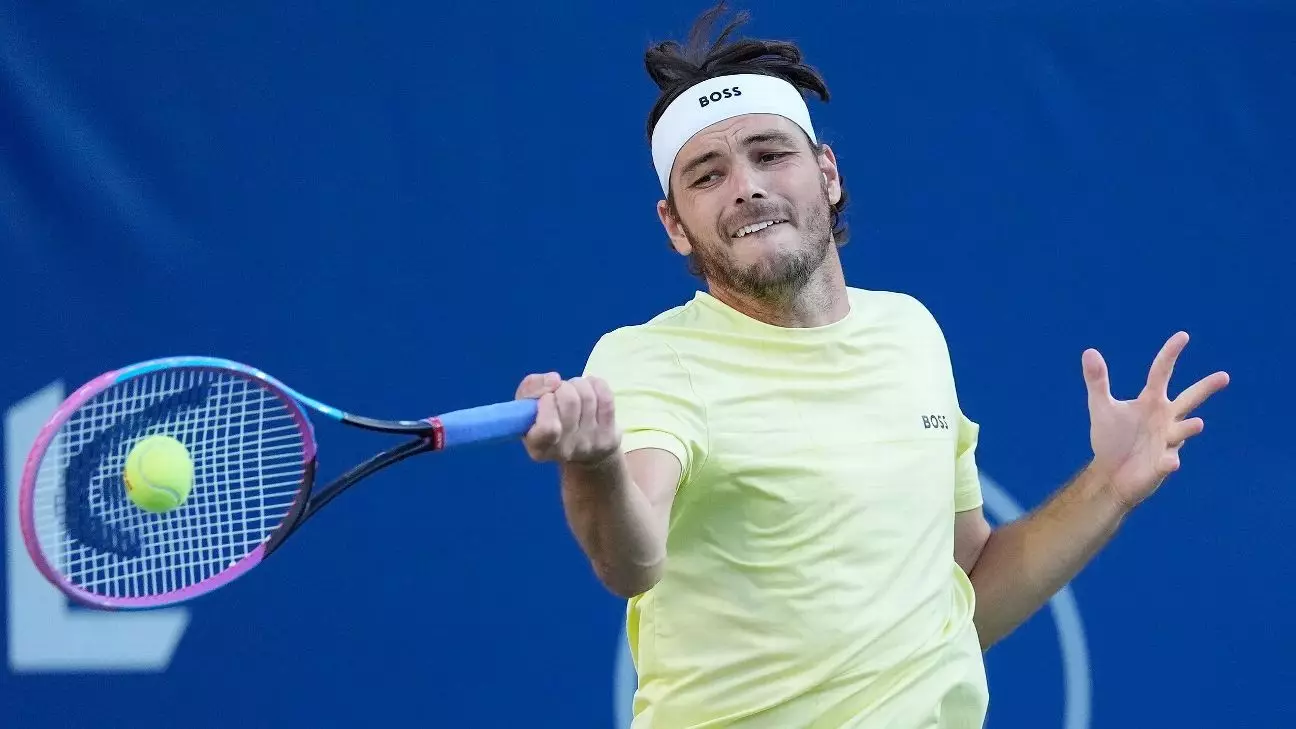In a sport historically dominated by legendary figures, the current tournament landscape illuminates a fresh wave of rising talent capable of challenging traditional hierarchies. Players like Taylor Fritz and Ben Shelton exemplify this shift, demonstrating resilience and strategic mastery that signal a changing dynamic in the world of professional tennis. Fritz, ranked fourth globally, embodies a combination of experience and adaptability, qualities that enable him to navigate the intense pressure of high-stakes matches, such as his recent victory over Canada’s towering Gabriel Diallo. While the audience’s enthusiasm was palpable, Fritz’s comment about the crowd’s friendliness underscores an often-overlooked aspect of the sport: the importance of good sportsmanship and an inviting atmosphere, which can bolster player confidence in tense moments.
Shelton’s gritty performance against Nakashima, culminating in a tense tie-break, highlights the psychological fortitude necessary to succeed in today’s game. These emerging talents are not solely relying on power; they are cultivating mental toughness and strategic precision. Their success suggests an evolution in the sport—one that appreciates versatility and resilience over mere physical prowess. As such, the landscape is becoming more diversified and increasingly unpredictable.
The Absence of Top-Tier Aces: A Market of Opportunities
The notable absence of top-ranked players like Jannik Sinner and Carlos Alcaraz from this tournament underscores a crucial reality: even the most dominant athletes are susceptible to scheduling choices, injuries, or strategic rest, which creates openings for other competitors. Historically, such gaps have served as fertile ground for ‘dark horse’ contenders to breakthrough, challenging the notion that only the top seeds can clinch titles. Jannik Sinner’s decision to skip the event, despite being the defending champion, indicates a strategic recalibration, perhaps to preserve energy or avoid burnout.
This geographical and ranking gap invigorates the competition, giving room for players like Jiri Lehecka and Flavio Cobolli to showcase their talents on a big stage. In tennis, absence is often a paradox—it both diminishes the star power but amplifies the significance of emerging talents. It reminds us that the sport is cyclical; no player, no matter how renowned, is invincible. Every tournament is an opportunity for new narratives to unfold, adding layers to the sport’s collective story.
The Emotional Landscape: Competitors’ Inner Battles and Triumphs
The emotional tenor of these matches highlights that tennis is as much a mental endeavor as it is physical. Andrey Rublev’s comment about intensifying his aggression in the latter stages of his match indicates an acute awareness of his tactical options and mental state. His motivation and excitement echo a universal truth: resilience comes through emotional control and strategic adaptation. The tension displayed in Shelton’s marathon tie-break against Nakashima underscores that endurance—mental as much as physical—is vital in clinching victory.
Meanwhile, players like Frances Tiafoe and Alex de Minaur navigate their own psychological terrains, each match testing their nerves, focus, and desire to ascend the rankings. With rising stars hungry to leave a mark and seasoned players recalibrating their approach, the tournament becomes more than just a contest of skill—it is an intricate dance of ambition, resilience, and strategic improvisation. This evolving emotional mosaic hints at a vibrant future for tennis, where perseverance and mental agility will become the cornerstones of success rather than just hitting power.
Overall, this tournament exemplifies the sport’s ongoing revolution. With a blend of emerging talents, strategic absences, and raw emotional display, tennis continues to captivate audiences worldwide. The game’s narrative is shifting—becoming more inclusive of diverse playing styles, mental toughness, and unexpected breakthroughs. For fans and players alike, this evolution promises a future where resilience and adaptability are celebrated as much as innate talent.

